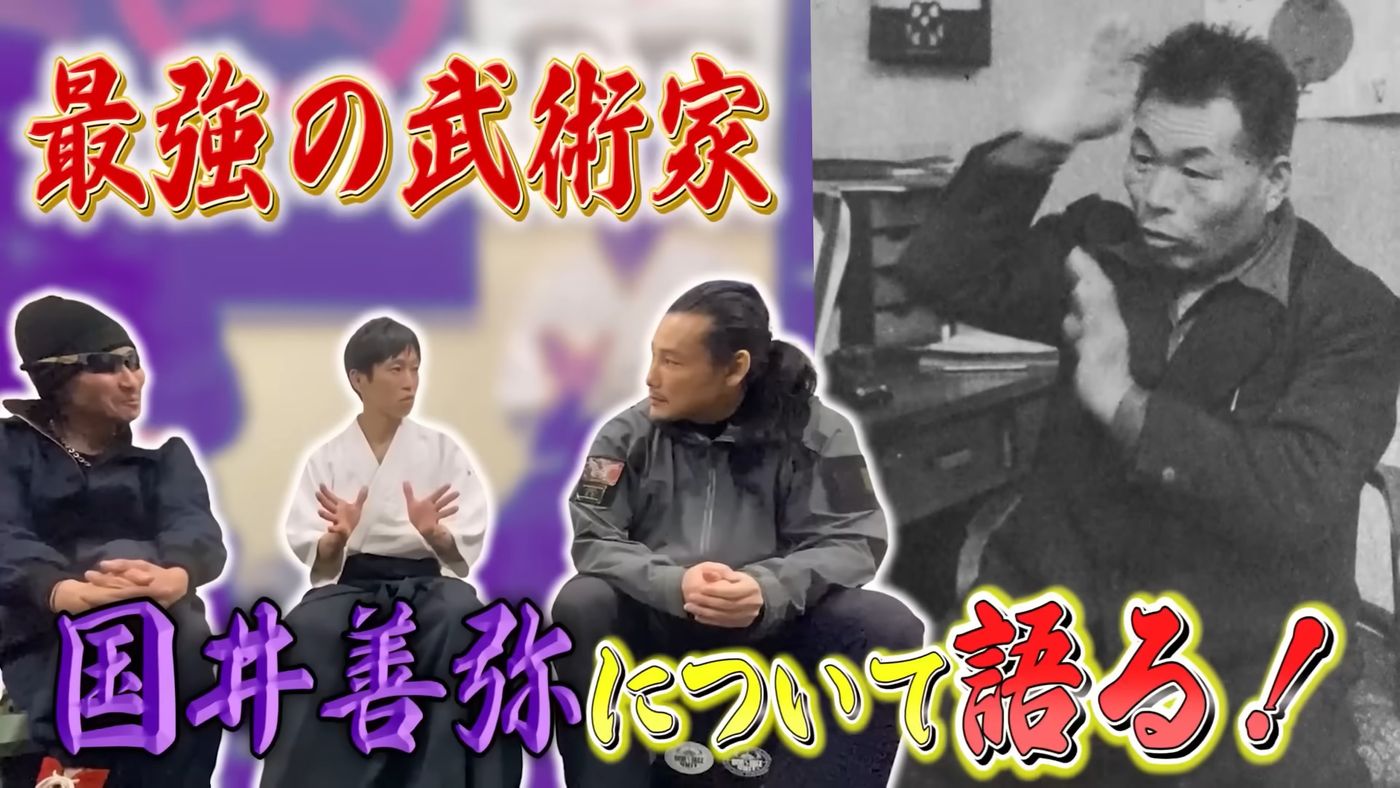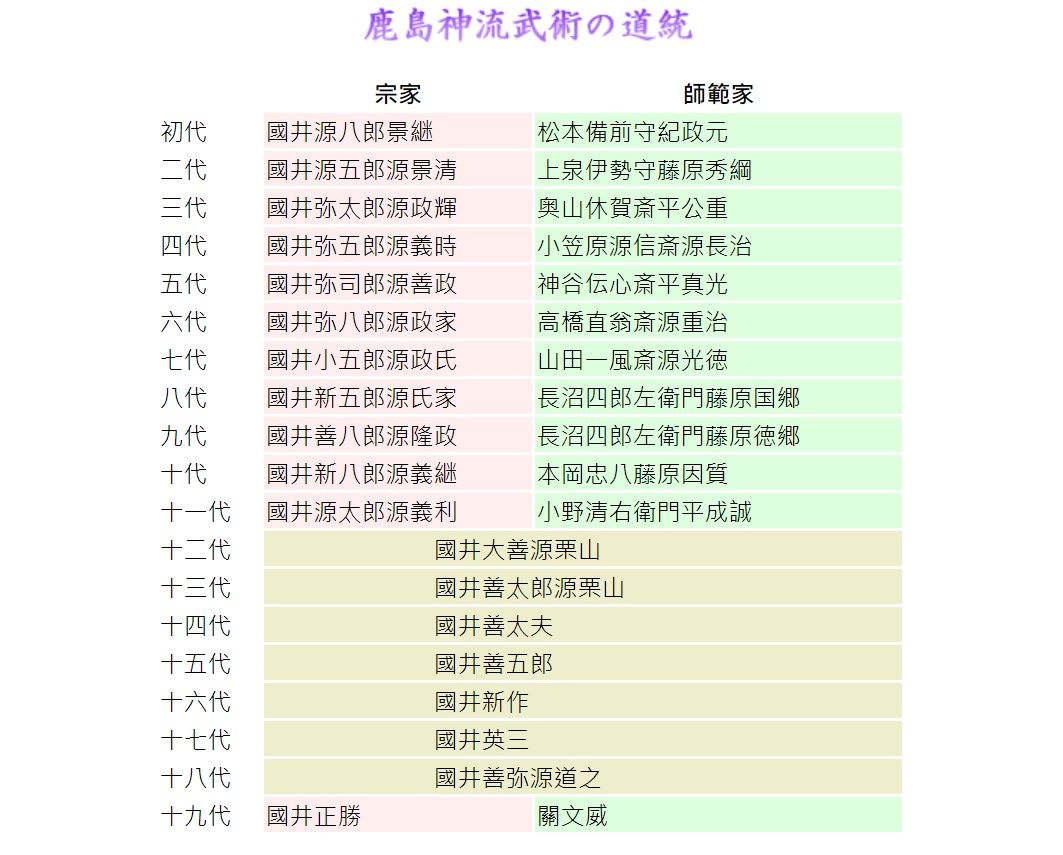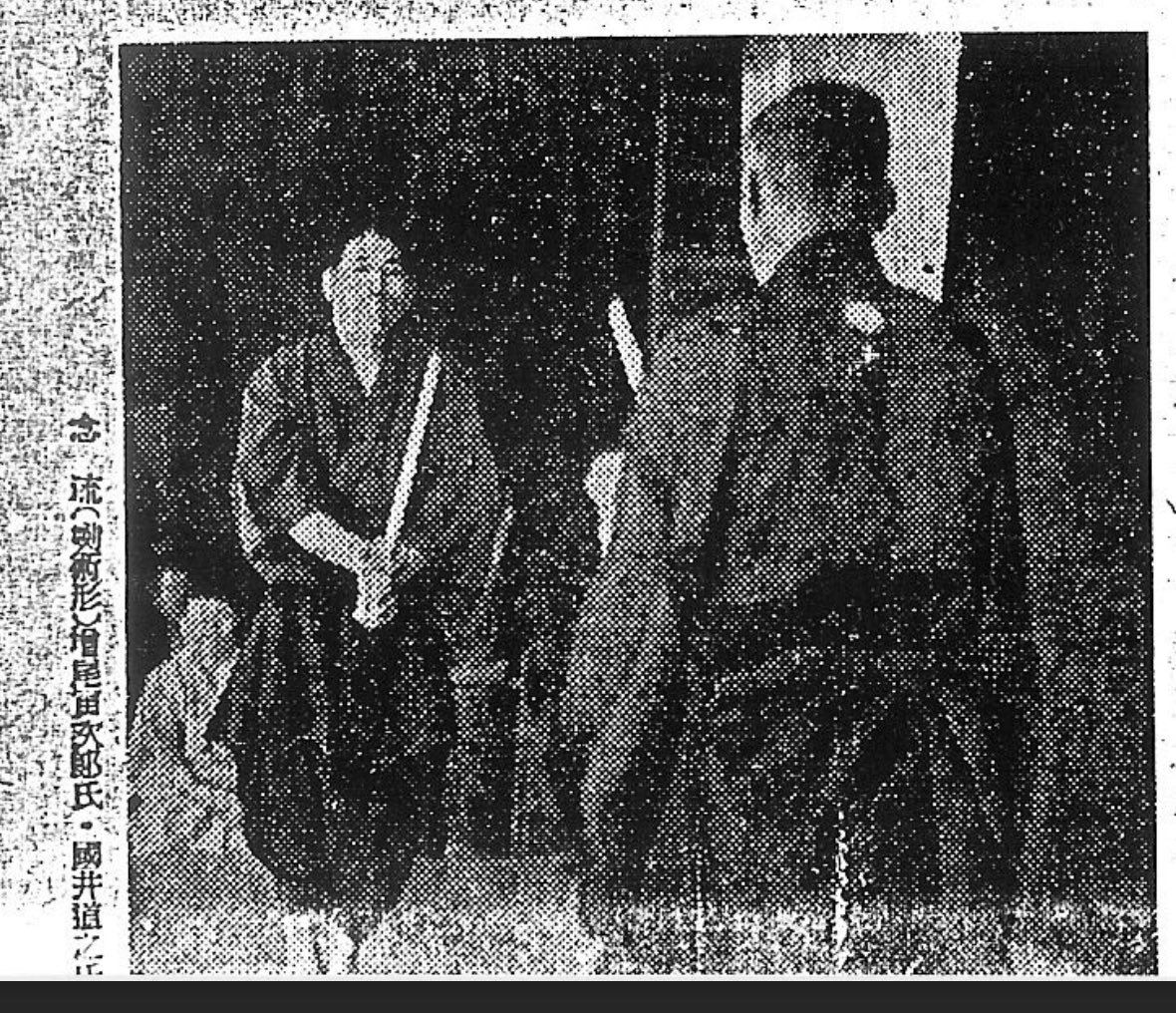
台灣人。 社會學出身,專長是歷史、政治社會學研究。 不知怎地開始研究日本武術的歷史文化⋯⋯ 聯繫作者:mannlu965@gmail.com
[Japanese martial arts anecdotes] Forget about Aiki, have you heard of Kunai Yoshiya? (superior)
A few days ago, Ryuji Shirakawa, a well-known YouTuber in the Aikido world, mentioned the name Kunai Yoshiya in a video [1] . In the speech, Shirakawa admired Kunai very much, not only praised him as the strongest martial artist of the Showa era, but also mentioned that "Kunii-sensei's most famous deed is that he guarded Japanese martial arts from GHQ."

The so-called GHQ refers to the Allied Command in Japan that took over Japan after World War II. At that time, in order to avoid the restoration of militarism, all martial arts activities in Japan were banned, and the ban was gradually lifted in the 1950s. Logically speaking, this kind of decision should be made under the multi-factorial consideration and wrestling, how can it be said that it is the credit of a certain person?
There are not only stories, but stories within stories.
The rumor that Kunai Yoshiya saved Japanese martial arts has been circulating on the Internet for many years, the most famous of which is the following YouTube video.
The content of the film is roughly: It means that after the Second World War, Japanese martial arts activities/education were banned, and after the Minister of State Sasamori Shunzo [2] , he finally reached an agreement with the United States: the United States and Japan will each send a representative to compete. If Fang wins, the martial arts activities can be resumed. At that time, the representative of the Japanese side selected by Sasamori was Kunai Yoshiya. He defeated the lance of the American soldier with the bamboo knife! He saved Nippon Budo!
In fact, this video is not a documentary, but a fragment of a Japanese variety show [3] . In addition, although there is an interview with Sasamori Junzo's son in the film, he did not mention Kunai in the interview. The author once asked a Japanese senior brother about this content. At first, the senior brother said implicitly, "Well...this statement is often heard, but I really don't know if it is true or not." After a while, he suddenly said, "Actually, it should be attributed to the credit. in various political operations."
Indeed, there are too many rumors about "one person and one sword rescue Japanese martial arts". When I heard the rumor for the first time, the author's intuitive reaction was: "Shouldn't this be the other way around? Shouldn't it be banned if you win?" The Japanese bureaucracy would actually agree to such a showdown from an official standpoint [4] .
In fact, the lifting of the ban on Japanese martial arts activities is staged. In 1950, the ban on Judo was lifted first, the ban on Kyudo was lifted in 1951, the ban on Naginata was lifted in 1953, and the ban on Kendo was lifted in schools at all levels from 1953 to 1957 [5] . If there is really a gambling fight to lift the ban, then the Americans will lose too much.
In those days when martial arts activities were banned, people involved ran around to petition. In order to show the cultural value of martial arts to the Allies, they even deliberately arranged to perform labor performances in various venues and Allied bases. According to the recollections of martial artists at the time, "The venue for martial arts is different from the usual serious gym.... There is also a jazz band playing in the middle of the martial arts... American soldiers are holding women and drinking..." For martial arts practitioners at that time, These are relatively humiliating and bizarre past events [6] . However, this approach did gradually pay off, and to a certain extent changed the Allies' perception of Japanese martial arts.
It is reasonable to speculate that the lifting of the ban on martial arts is the result of changes in the international situation [7] and the efforts of people from all walks of life. It is still possible to say that Mr. Guojing went to assist Lao Jun in military exercises and then clashed with American soldiers. However, it would be too romantic to say that the ban on Japanese martial arts was lifted because the Kunui clan won the duel against the American soldiers. [8]
Exactly when such rumors began to appear is now uncertain. However, looking at Kunui's genre and experience should allow readers to have a clearer outline and imagination.
Kunai Yoshiya (1894~1966), whose real name was Kunai Michiyuki, was known as "Imamusashi" (meaning "present Miyamoto Musashi") during the Showa period. After World War I, Kunai retired from the army and opened a gym near the Takino River in Tokyo. It is said that he hung a sign saying "Welcome to the gym!" outside the gym. He tried out with various martial arts schools in his life and never failed. Akabane Ryuo of Nagoya Chunfengkan recalled that he had heard of Kunai's reputation in college [9] . Akabane mentioned in the article that Kunui died of illness within a few years. It can be seen from this that Kunai Yoshiya's undefeated reputation lasted until his later years.
The Kunui clan is the eighteenth clan of Kashima Shenryu, and the origin of Kashima Shenryu is quite interesting. The ancient Japanese martial arts will be more or less related to the story of the ancestors. However, the interesting thing about this genre is not its origin story, but the inheritance form it advocates.
The first half of the pedigree advocated by this school is roughly the same as that of Naoxin Ying-ryu: Nao-shin-ying-ryu is a school in the Edo period, and its ancestor is Matsumoto Bizenshou in the Warring States Period [10] . In the legend of this genre, Matsumoto Bizen guarded the practice at Kashima Shrine, and in a dream was taught the profound meaning of swordsmanship by a god. The second generation of the clan is the founder of the new Yinliu Kamizumi Nobuzuna.
Kashima Jinryu, on the other hand, maintains that the gods whom Matsumoto Bizenshou met were the ancestors of the Kunui family. The Kunii family has passed down the mystery of the Kashima sword from generation to generation, so they have been the clan for generations. Matsumoto Bizenshou, Kamizumi Nobuzuna and others are all teachers of this genre, and the Shinyin-ryu is a new genre created after Kamizumi was awarded the Kashima Shinryu.

The division of martial arts schools into clans and teachers may be common in the Showa era, but the school's claim to be inherited from the Warring States period is too far beyond the times [11] . In addition, Kunui claimed that because Kashima Shinryu had been loyal to the Japanese emperor for generations, he was suppressed by the Tokugawa family during the Edo period and burned all the biography and scrolls that could prove the inheritance. Except for the school's claims [12] , there is no corresponding record in various historical documents.
Today, the official website of Kashima Shinryu specifically mentioned that when the "Kobudo Promotion Association" was established, Kunai Yoshiya and other martial artists met with Matsumoto, the first acting director, to prove Kunui's contribution to the promotion and promotion of Kobudo [13] . The Kunui clan did attend the 1935 Ancient Budo Promotion Association's martial arts conference, but the name of Kunai Yoshiya (Michi) was under the ninja [14] .

Taking the ancient Japanese martial arts as an example, it is not uncommon to learn a certain genre and become independent. The focus of the inheritance of martial arts lies in the teaching of techniques rather than the study of history. At that time, even if there were people who had opinions on the origin of Kashima Jinryu, there was a sign outside the Kunui Dokan "Welcome to Kick the Hall!". Kunui's life has never been defeated, and Kashima Shenryu has survived. However, this was only when Kunai Yoshiya was alive.
The authority of Kashima Jinryu is almost based on Kunai Yenya alone. So this pillar has fallen, how will the genre handle itself? In addition, "Israeli Musashi" left behind not only its reputation, but with the development of information, some historical issues had to be dealt with. We will continue to discuss related topics in the next article.
This article is simultaneously published on the author's square grid topic .
Notes:
[1] Refer to the video "Heji Road's Talent" "ウェイブ Founder" Inagawa Yoshiki's "撃パンチ" を Received け て み た! 〉 at https://youtu.be/2z9qZtKFGfI . Access date: 2022/05/04.
[2] Sasamori Shunzo is also the 16th clan of the Ono Ichito-style family.
[3] The film is a segment of the variety show "Material Knowledge り One Night づけ" broadcast by NHK in Japan in 2003. It was the release of the big river drama "Musashi" that year, and the program produced "Musashi"-related topics.
[4] According to rumors, the conditions for the duel were that the Japanese representatives only used bamboo swords, and the American representatives used real stabbing guns. Here is an example for comparison: in the 35th year of the Showa era, before the Katori Shinto-ryu was certified as an intangible cultural property by the Chiba prefectural government, kendo practitioners protested and demanded a public contest. At that time, the Shinto-style people had already started special training for martial arts. Later, because the city hall was worried that someone would be injured, the martial arts were stopped directly. For details, please refer to Dazhuli Dian "Peace Law" pp74-80. The author takes this example to illustrate that although duels are common in novels and comics, there are too many considerations in modern society. It is hard to imagine that the Japanese government would propose such a duel from an official position after the war.
[5] Refer to Nippon Budokan's "Japanese Budo" pp63-64
[6] Refer to Sakagami Yasuhiro "GHQ Occupies the Lower Road". Sakagami Yasushi believes that these martial arts activities are actually closer to Laojun performances. Among them, the kendo martial arts at that time emphasized that it was purely sports, not spiritual training, and the kendo martial arts practitioners were strictly forbidden to shout.
[7] The Korean War broke out in 1950, and the "US-Japan Security Treaty" was signed in 1951.
[8] Kunai Yoshiya passed away in 1966, and the magazine "Martial Arts タイムス" published his reminiscence reports. There was no mention of "rescue Japanese martial arts". In 1976, Guan Wenwei, a disciple of Kunai and the current Kashima Jinryu teacher, published the book "The Origin of Japanese Budo Kashima Jinryu", which also did not mention this at all. In addition, although it has nothing to do with this matter, the aforementioned Minister of State Sasamori Junzo died in 1976. It can be speculated that there should be no such rumors before Kunjing's death. For the report on Kunai's recollection, please refer to p24 of the September 1941 issue of "Budo タイムス".
[9] Now he is the head of the Kanto branch of Nagoya Chunfengkan. In recent years, he is famous for his works related to Yuanmingyu and Yanagyu Xinyingyu. Akabane Ryuo was born in 1943, and his college years should be in the 1960s. For related memories, please refer to Akabane Ryuo's "Shinyin Ryu を Philosophy す る".
[10] Since the straight heart shadow stream is a genre of the Edo period, these stream groups and clans before the Edo period can be considered to be traced back. In addition, there are two versions of Matsumoto Bizenshou and Sugimoto Bizenshou of the ancestors of the straight heart shadow stream. You can refer to 軽 Mike Zun "Zhixinying Liu に お け る Liu Zu's name before を め ぐ る debate に つ い て"
[11] Wushu is a technique that is directly related to the outcome of life and death. Under this reality, the focus of its inheritance lies in the pros and cons of the technique rather than blood. Therefore, it was difficult to form an institutionalized family tradition system before the Meiji era. For related discussions, please refer to another article of the author "Your Senior Brother is not your Senior Brother" .
[12] On the official website, Kashima Shenliu constantly emphasizes the basis of his own Taoism and the difference between his own and other schools (Zhixinyingliu). Yet the genre's arguments, and the arguments cited, are almost always self-referential.
[13] Refer to the Kashima Shinryu official website "True Story of Kashima Shinryu" page, URL: https://www.kashima-shinryu.jp/seiden/i_historical_fact.html , access date: 2022/05/31
[14] Kunai Yoshiya's name in the early days of the establishment of the Ancient Budo Promotion Association was Nenryu. In an interview after Kunai's death, his disciple claimed that the reason why he went to study Nian-ryu was to test the strength of his family's martial arts. For related interviews, please refer to the Summer 1997 issue of GOKUI.
Like my work?
Don't forget to support or like, so I know you are with me..
Comment…